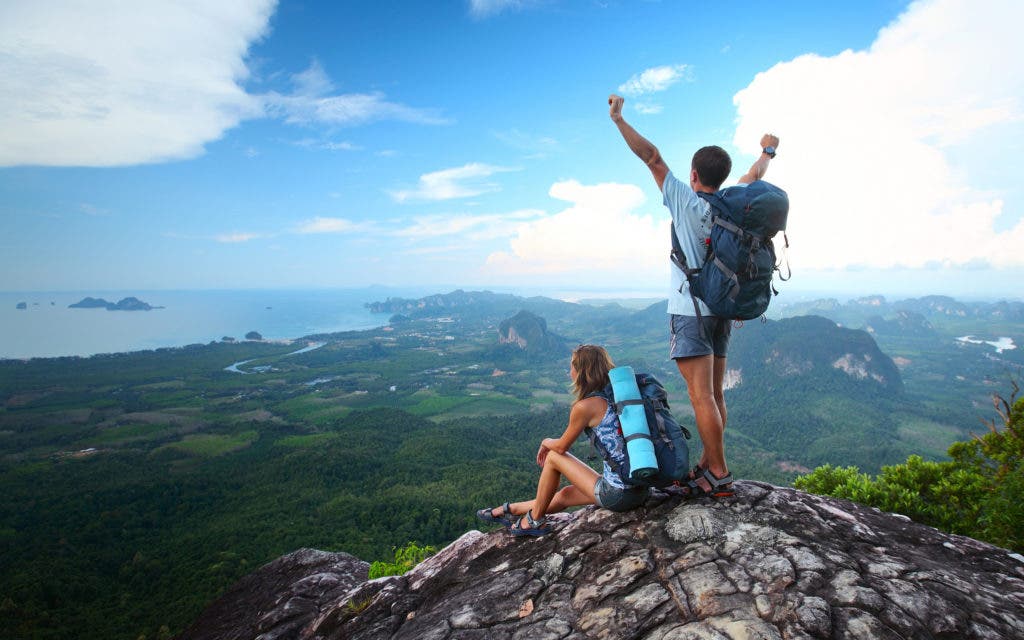Are you going on an adventure hike? This helpful guide shows you what to look for in a backpack and includes our top 3 items that will keep your pack lightweight and filled with the essentials.

What to Look for in a Backpack
Day Packs
These packs are used for short day-trips and they're designed to carry up to 10-20 liters. Most contain chest and shoulder straps only (vs. backpacks that have chest, shoulder, and hip straps). For the best optimization, you want a pack that contains a variety of pockets and a hydration bladder.
Overnight Packs
There are many features to these packs such as internal and external frames (and sometimes even frame-less, but that's a topic for another day...), although most packs are the internal frame packs. Internal frames hold closer to your back, which is helpful in rigorous terrains and scree fields (small rocks that will often move or slide underfoot).
Overnight packs should have adjustable shoulder straps, sternum straps and hip belts. These three areas are key. I suggest getting a good fitting at your local adventure store (and jot down the details), even if you end up buying the pack elsewhere. Sizing is based on torso size, so it is better to get fitted rather than guessing. Shoulder straps should always be comfortable, padded, and adjustable. The chest/sternum strap (some come with the pack and some can be an add-on), provides support for the rest of your body, helping to keep you balanced and your pack secure. The hip belt is your best friend. It can determine the outcome of completing a hike or not. You will be carrying most of your backpack's weight (2/3 of the total weight) on your hips, so great a hip-belt fit is essential. Always get a pack that has a good return policy and warranty.
Top 3 Essentials for Your Backpack
1. Nutrition: What Foods to Pack

Make potassium and electrolyte-rich foods a staple in your backpack. The following foods are easy to pack, lightweight, and provide plenty of electrolytes. Consuming these foods with water will keep hydration and energy levels up to par.
- Bananas
- Citrus fruits
- Lemonade
- Orange juice
- Tomato juice
2. Water or Sports Drinks
Staying hydrated is an important factor when hiking, especially in hot conditions leading to perspiration. It's always a good idea to drink up before your hike to avoid the effects of dehydration. Sports Drinks are a popular way to get extra carbohydrates (usually sugar) and minerals such as sodium and potassium. These minerals are also known as electrolytes which benefit the body during strenuous hikes that require a high level of energy. To keep it simple, just stick with water and look to your nutrition pack for an energy boost through carbs and minerals.
3. First Aid: What to Pack for a Hike
While a complete first aid kit is great to have at base camp, it's best to pack light when it comes to bringing one with you. The terrain and distance you will be hiking will determine the first aid items you should bring in your backpack. Cuts and scrapes are probably the most common, so keeping out infection and protecting the wound is a top priority. Lightweight items such as disinfectant wipes, butterfly bandages to keep cuts closed, and a bandage roll with clips to keep you wrapped, are excellent items to include in your backpack. There are preloaded first aid kits available at your favorite adventure store, however you can save some cash by packing yourself.
Don't Forget Your Sunglasses
Before you hit the trail, make sure you have a good pair of sunglasses. New lens technology allows for better clarity and contrast leading to better vision. If you can see what's coming up, you can avoid obstacles and help prevent injury. If you are in the market for New Sunglasses we carry a large selection from top brands. We also specialize in Prescription Sunglasses and have certified opticians on hand to help you find the perfect lens. If you have any questions please Contact Us. Expect great service at SportRx.






